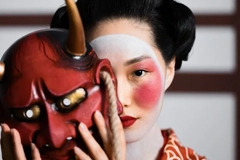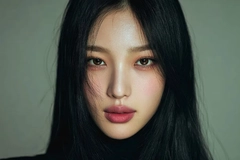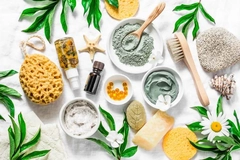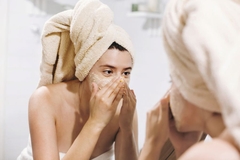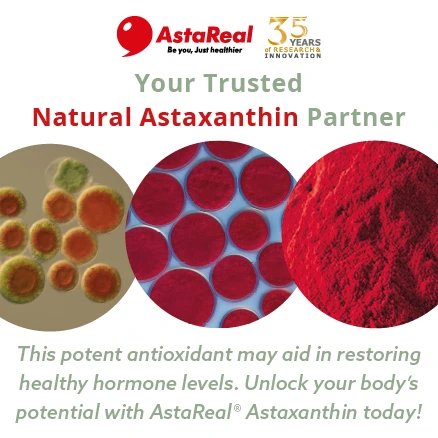Report sees opportunity for K-beauty brands to target “busy moms” in North America
North Americans are keying into K-beauty products, with mothers driving the latest wave of growth. Landing International analyzed the impact of K-beauty on US consumers and identified growth opportunities for retailers.
The Los Angeles-based company says the “cultural phenomenon” of K-beauty thriving in the West is fueled by the rising global influence of Korean culture including K-pop music and television dramas. Landing International helps beauty brands increase sales and scale up to retail.
The Second Wave of K-Beauty report details that K-Beauty has grown 81.5% in households with kids aged 6–12, and adoption is up 66.1% in households with teenagers (aged 13–17).
“The rise of K-Beauty in family households presents a significant opportunity for brands targeting busy moms seeking effective skin care solutions for themselves and their families,” writes Landing International.
Cross-generational beauty
Landing International estimates the K-beauty market was worth approximately US$91.99 billion in 2022, with North America accounting for about US$3.8 billion. The US market is expected to grow further, potentially surpassing US$9.9 billion by 2032.
Gen X (40–55), while representing 15% of the market, is seeing the “fastest dollar growth,” signaling increasing interest in K-Beauty products. Meanwhile, Millennials (25–40) make up 43% of the market, focused on anti-aging and preventative skin care.
 Consumers seek natural ingredients, such as green tea.The report suggests mothers pass on skin care habits to their teens, who are drawn to K-Beauty’s “trendy appeal.”
Consumers seek natural ingredients, such as green tea.The report suggests mothers pass on skin care habits to their teens, who are drawn to K-Beauty’s “trendy appeal.”
Kids and teenagers are increasingly interested in skin care, creating the “Sephora kids” phenomenon. Earlier this year, social media exploded with complaints and concerns about children delving into expensive adult skin care and becoming enamored with anti-aging products.
Gen Z and Millennials also crave Korean skin care makeup. The Second Wave of K-Beauty says these shoppers “prioritize effective, affordable beauty products.”
Millennials make up 43% of the market, and they are focused on anti-aging and preventative skin care. Online-focused Gen Z (16–24) accounts for 33% of K-beauty buyers and spends US$5 more per year on K-beauty than the average consumer.
Social media sparks sales
In the US, social media platforms like Instagram, YouTube and TikTok play a “massive role” in beauty trends. Landing International praises K-beauty brands for actively engaging with influencers and consumers to foster loyalty and trust in their consumers.
According to Spate, six of the top ten skin care brands by quarter-over-quarter TikTok view growth are K-beauty brands.
Landing International calls social media a “major driver” for the Korean products’ boom.
“By collaborating with influencers and directly interacting with their audience, brands can gain valuable feedback and build a loyal following. Influencers help drive awareness and serve as authentic voices who can validate the brand’s effectiveness,” reads the report.
Searches with the hashtag #kbeautymakeup were up 85% year-over-year on TikTok, and the app is said to be driving “significant sales.” Social media is named the “top driver” of awareness and traffic for K-beauty brands on Amazon. US consumers are searching for specialty products such as sheet masks and pimple patches, K-beauty staples.
US consumers are searching for specialty products such as sheet masks and pimple patches, K-beauty staples.
The company is witnessing a “dominance of K-Beauty on platforms like Amazon and TikTok.”
Korean skin care and makeup are also snowballing on e-commerce platforms. For example, last year, K-beauty revenue on Amazon.com jumped 78% year-over-year. The number of Korean cosmetics sellers earning over US$100,000 yearly will more than double in 2022.
In response to growing global demand, Amazon launched an initiative called “Project K-Beauty Go Big” in June. The project seeks to simplify the process for Korean beauty brands to sell and market their products internationally on Amazon.
Achieving success
The report outlines recommendations for K-beauty brands looking to succeed in North America.
Managing the brand’s operations between Korea and the US is named an “important factor” for success. The report outlines that brands must balance their Korean business with the needs of the US and other international markets.
“By strategically leveraging its presence in Korea and using that as a springboard, the brand can funnel resources into growing its US operations,” says Landing International.
“However, this requires the brand to adapt its sales strategies based on regional demands. A strong global sales strategy ensures that the US business is supported by the home market and can evolve independently to cater to American consumers.”
Landing International says K-beauty brands must have a solid product pipeline with a well-rounded base assortment of core products that establish the brand’s identity.
 Korean skin care and makeup brands have multiple growth opportunities in the North American market.Demographic breakdown
Korean skin care and makeup brands have multiple growth opportunities in the North American market.Demographic breakdown
Penetration growth for K-beauty is the highest among Hispanic shoppers, indicating that this demographic is quickly adopting K-beauty products. Forty percent of consumers are Caucasian, 30% are Asian American and 15% are Black.
The report details that certain products are favorable to North American consumers. Fifty-four percent prioritize skin care, including cleansers, serums and moisturizers, and 30% of buyers seek specialty products such as sheet masks and pimple patches. Additionally, 16% focus on cosmetics, especially BB creams and cushion foundations.
K-Beauty buyers in North America are brand loyal and open to experimentation. Forty-two percent of consumers are loyal to specific brands such as Laneige, Innisfree and Cosrx, and 58% enjoy trying new products.
The sustainable skin care trend translates to K-beauty, with 65% of buyers in North America preferring products with eco-friendly packaging. Fifty-eight percent seek out products made with natural ingredients, such as green tea, commonly found in K-beauty formulations.

